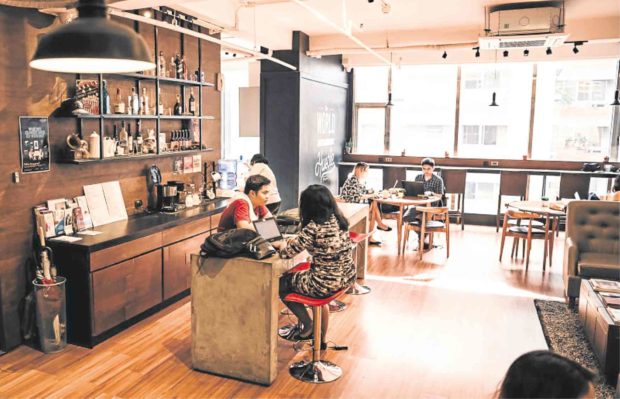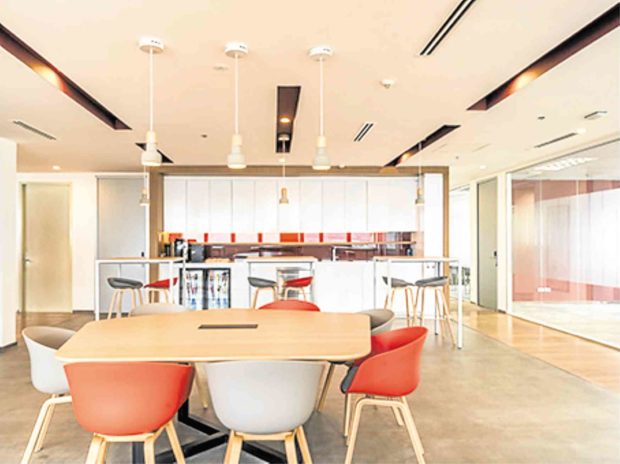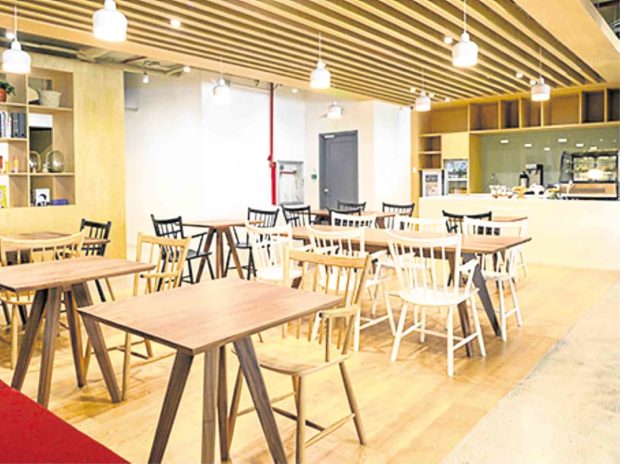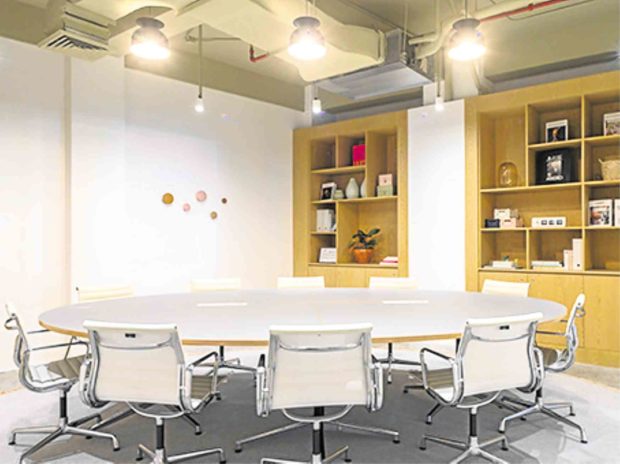Shared spaces
I work at the penthouse floor of a building along Ayala Avenue. My office has a nice reception area, a spacious lounge adjoining a pantry with free-flowing coffee, Wi-Fi, a large conference room with HD equipment for video conferencing and client meetings, round-the-clock security and a friendly full-time admin staff who handles anything from printing, answering calls to running some errands.
This is not a plush private office of a key executive at some multinational corporation. I am a design entrepreneur and I hold office at a co-working space—one of the relaxed, hipwork environments that have risen in many central business districts in Metro Manila.
A characteristically urban phenomenon, co-working has been around for a few years.
‘Branch office’
Essentially, co-working is a flexible workspace where equipment, physical space and services are shared by different people and different companies and where the use of facilities is also flexible—meaning rent can range for a few hours to several years.
The product appeals to small scale businesses, freelancers or the “solo-preneurs”, start-ups, business incubators and mobile workers who need a compact space for their operations without compromising convenience, address and level of service. It is the equivalent of gym membership applied to the workplace.
Co-working initially grew out of the need for business travelers to have a “branch office” in various places in the world where they can simply plug in. From the initial business center roots, the co-working space has since evolved into a spectrum of work spaces that range from the hip and casual vibe, to the more polished feel of executive suites.
They now cater to more than just the globe-trotting executives as these spaces have started to attract clients that include freelancers, start-ups, small businesses and various collaborative enterprises. Numerous chains of co-working spaces both local and foreign, have emerged such as Clock-In, Acceler8, WeWork and Regus. All address the need for flexible and convenient work environments and offer more than just a desk for the mobile worker.
The co-working space phenomenon, like many other products of the shared economy was triggered and enabled by the confluence of several factors such as urbanization, globalization and higher user mobility, technology, and the growing demand for more affordable and flexible work space options.
Emergence of digital nomads
A key factor is the emergence of smaller units of production—down to the level of the individual freelancer or entrepreneur: digital nomads who could work anywhere and anytime whether from home or at a café in another country.
Advancement in technology has essentially unhinged productivity from the confines of location and size, allowing productive output at smaller scales of operations. What used to take 10 people to accomplish can now be done by fewer people with the right technology.
Advancements in communications and cloud computing have also redefined the concept of presence in the workplace and liberated the worker, enabling greater mobility. Thus, in an environment where work is mobile, files are digital and presence is virtual, the shape and form of the workplace has been disrupted by alternative modes including co-working.
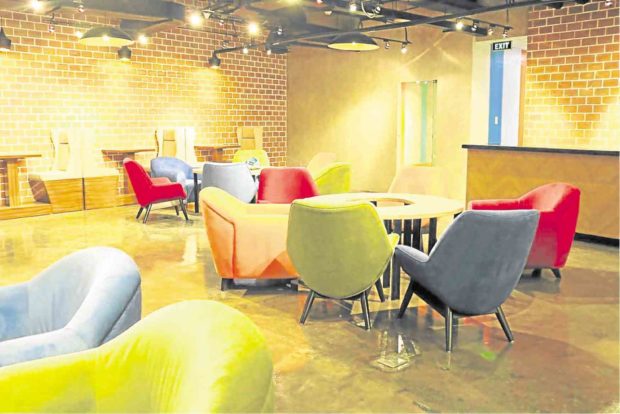
In co-working spaces, it is not just the space, equipment and services that are shared—the larger opportunity to share ideas, knowledge and skills is also present.
The shared workspace also tends to foster collaboration and professional networking.
Bringing together varied specialized companies into a common and more relaxed environment expands the professional network of firms wherein serendipitous encounters can possibly lead to the exchange of ideas, collaboration and cooperation on joint endeavors. The business incubator looking for a graphics designer for his project might meet a freelancing digital artist in a co-working space and may decide to collaborate.
Thus, in co-working spaces, it is not just space, equipment and services that are shared, but the larger opportunity to share ideas, knowledge and skills is also present. Several co-working spaces are deliberate in fostering networking and collaboration. Many host seminars, get-togethers and social activities to entice tenants to engage one another.
The author is the founder and principal of JLPD, a masterplanning and architectural design firm he started in 2017.

